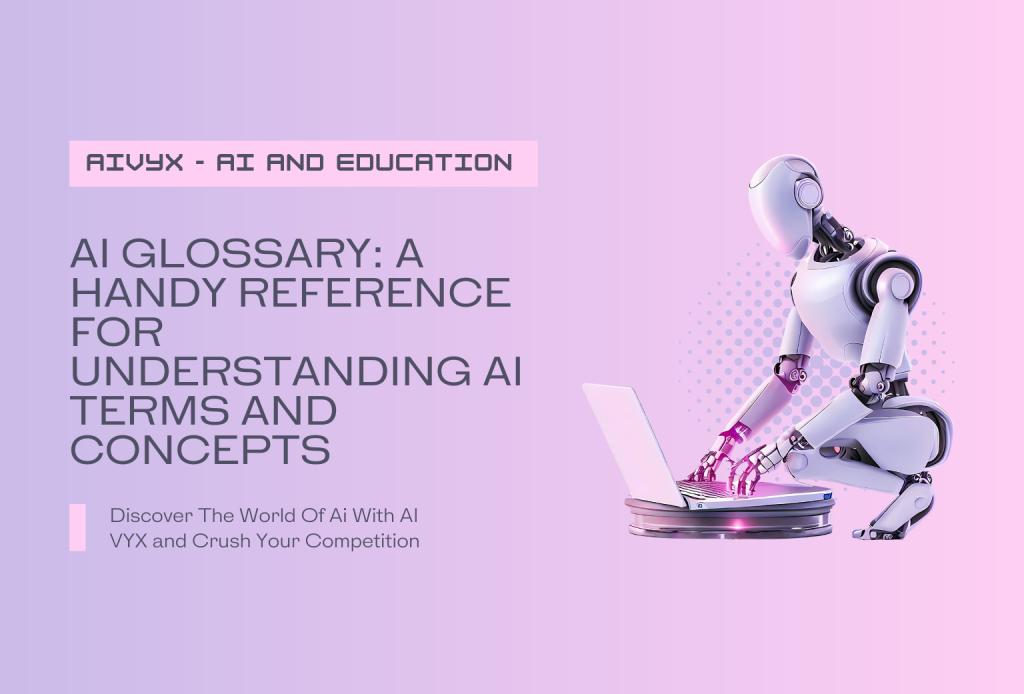AI isn’t just a trendy buzzword; it’s the driving force behind our digital future, reshaping industries, pushing boundaries, and redefining what’s possible.
This AI glossary is your all-access pass to the core of AI. Here, we don’t just explain terms and concepts.
We unravel the captivating world of artificial intelligence, making it accessible and understandable for all.
From deciphering the intricacies of machine learning to exploring the astonishing applications reshaping our daily lives, we’re on a mission to demystify AI.
So, fasten your seatbelts and get ready to embark on an exhilarating journey through the limitless possibilities of artificial intelligence.
What is AI?
AI is a computer-based program that can produce responses like human beings after being trained on a large set of data.
AI learns from that data and generates completely new outcomes.
It can help us in generating text, images, and other human-like responses. AI is an umbrella term that encompasses a range of technologies, such as machine learning, deep learning, natural language processing, computer vision, and more.
These technologies enable machines to learn from data and perform tasks that previously only humans could do.
AI has many practical applications across various industries and domains, such as healthcare, finance, education, entertainment, and social goods.
AI can help us in medical diagnosis, drug discovery, credit scoring, fraud detection, language translation, image recognition, chatbots, and more.
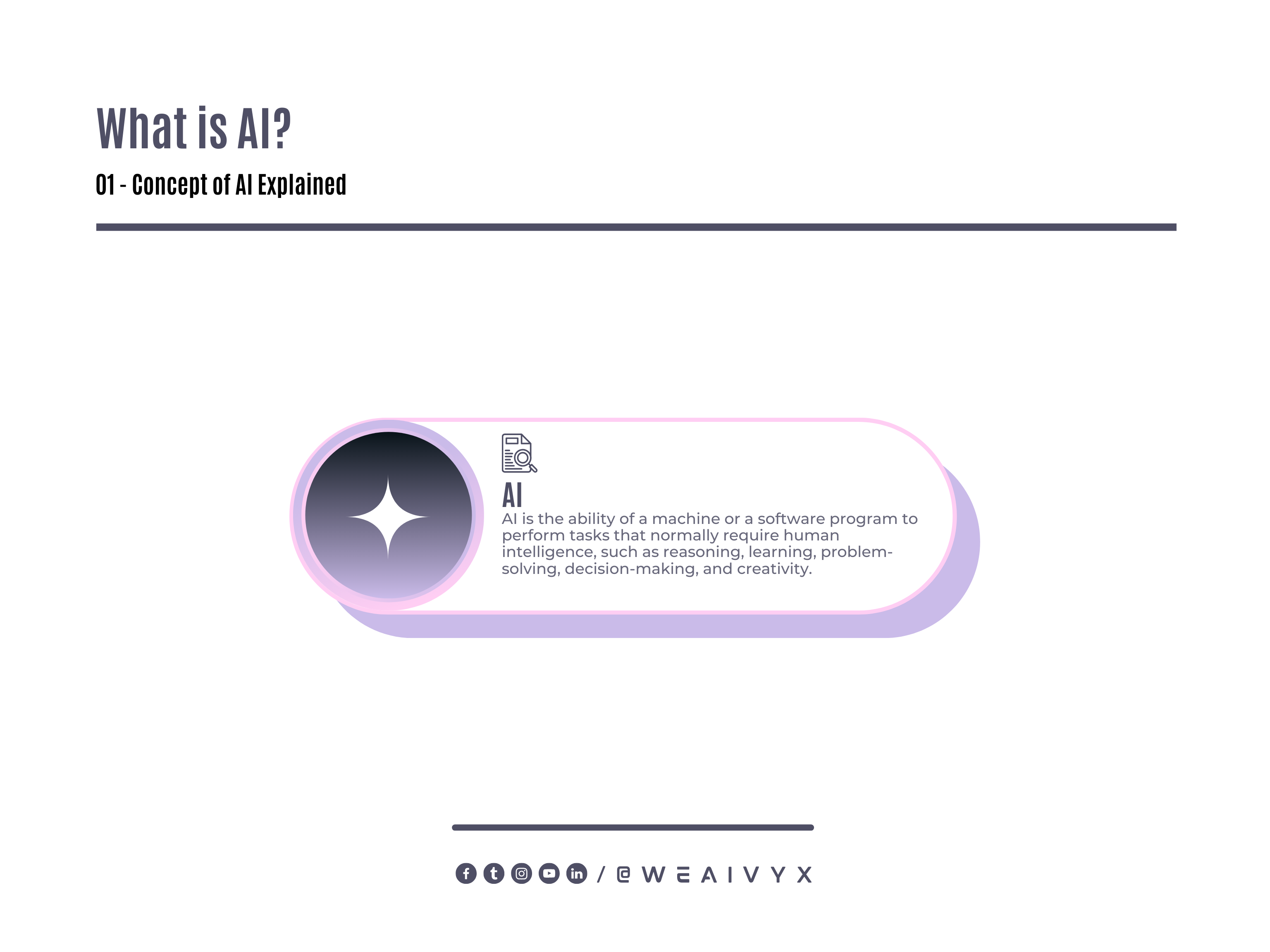
AI can be classified into two main categories: Narrow AI and General AI.
Narrow AI
Also known as weak AI or applied AI. It is the type of AI that can perform specific tasks or solve specific problems, usually within a limited domain or scope.
Examples of narrow AI include speech recognition, face recognition, image classification, spam filtering, self-driving cars, chess playing, etc.
General AI
Also known as strong AI or artificial general intelligence (AGI). It is the type of AI that can perform any intellectual task that a human can do, across different domains and contexts.
Examples of general AI include human-like robots, virtual assistants, chatbots, etc.
General AI is still a hypothetical concept that has not been achieved yet.
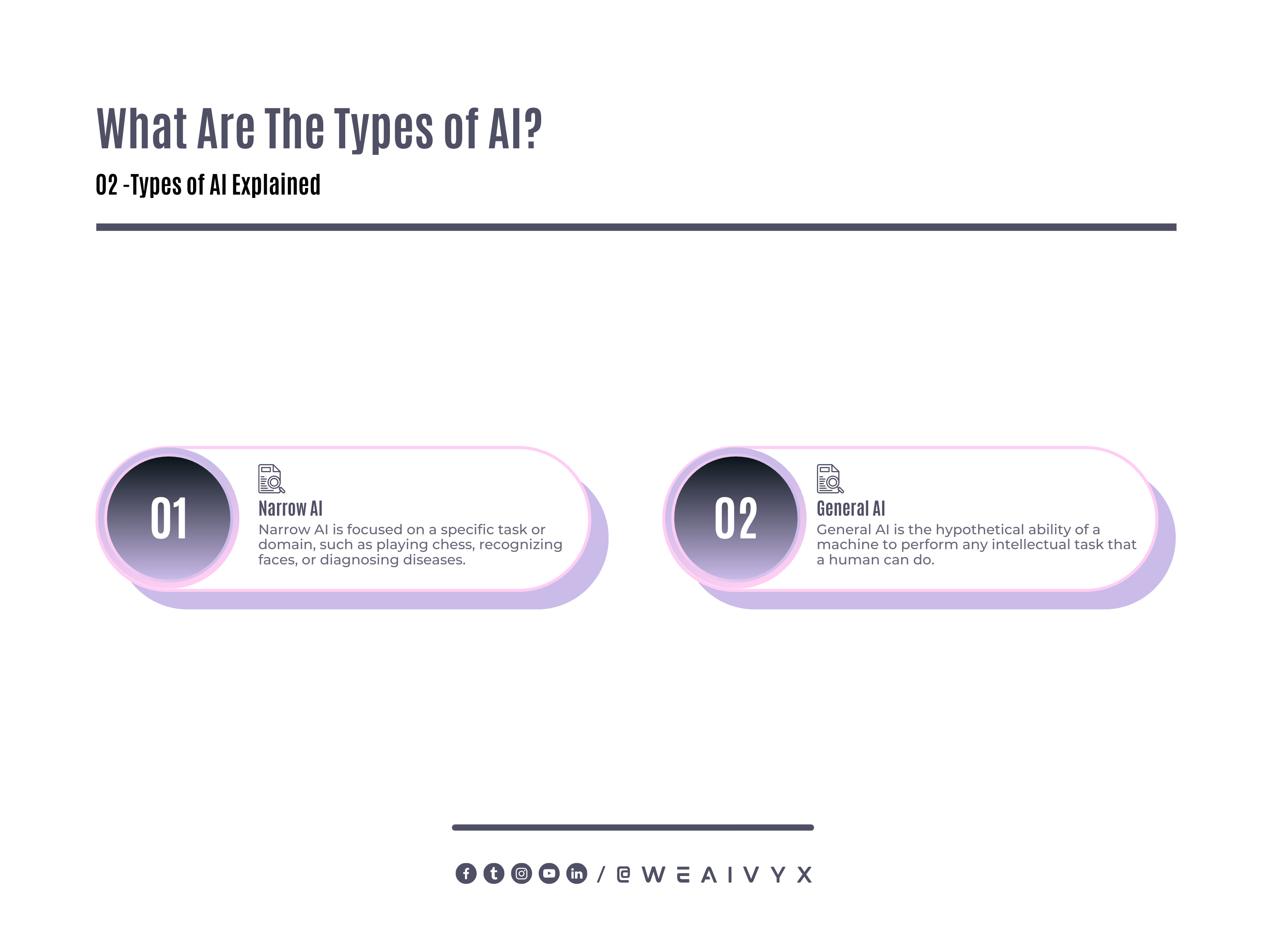
AI can also be classified into two main approaches: Symbolic AI and Sub-Symbolic AI.
Symbolic AI
Symbolic AI is the approach that uses symbols and rules to represent and manipulate knowledge.
Sub-Symbolic AI
Sub-symbolic AI is the approach that uses numerical values and mathematical models to simulate neural networks and learning processes.
AI Revolution
Many AI-based language systems have been released in recent times. They are very popular among the users of this field.
The large language system of the current time is very sophisticated and easier to use than that of past systems.
Because in the past it was very difficult to provide computers to work on a large dataset of information but now it is easy.
Systems like Chat GPT-4 and the Bing search engine of Microsoft are some of the most AI-powered systems.
AI-based language systems can help us reduce the burden of many works that were first considered impossible for a computer.
They can also help us achieve our personal or professional goals, such as learning new skills, improving our writing, having fun, and more.
However, they also have some limitations and challenges, such as ethical, social, and environmental implications. Therefore, we should use them responsibly and critically.
How It Can Help Us
Today is the age of AI. Many works are being done to increase its efficiency and uses. They can help us with generation things or give us solutions and reasons for a problem.
It can help us better deal with the climate change that we are currently facing and many other problems related to the environment. We can save money and time using AI.
What Are the Main Sub-Disciplines of AI?
AI is a multidisciplinary field that draws from various branches of computer science, mathematics, statistics, engineering, psychology, neuroscience, and more. Some of the main sub-disciplines of AI are:
Machine Learning
The study of algorithms and models that can learn from data and improve their performance without explicit programming.
Machine learning can be divided into three main types: supervised learning, unsupervised learning, and reinforcement learning.
Deep Learning
A subset of machine learning that uses artificial neural networks to learn from large amounts of data and perform complex tasks.
Deep learning can be applied to various domains such as computer vision, natural language processing, speech recognition, etc.
Natural Language Processing
The study of how computers can understand and generate natural language texts or speech. Natural language processing can be used for various tasks such as machine translation, sentiment analysis, text summarization, question answering, etc.
Natural Language Understanding
Natural language understanding (NLU) is a type of NLP where the system tries to comprehend the meaning and intent of natural language input.
For example, in question answering, the system tries to understand the query and provide an appropriate answer.
NLU involves various tasks such as parsing, semantic analysis, sentiment analysis, entity recognition, etc.
Natural Language Generation
Natural language generation (NLG) is a type of NLP where the system tries to produce natural language output based on some input data or information.
For example, in text summarization, the system tries to generate a concise summary of a long text. NLG involves various tasks such as planning, content selection, lexicalization, realization, etc
Computer Vision
The study of how computers can perceive and understand visual information such as images or videos.
Computer vision can be used for various tasks such as face recognition, object detection, scene segmentation, optical character recognition, etc.
Reinforcement Learning
A type of machine learning that focuses on how agents can learn from their own actions and feedback from the environment to achieve their goals.
Reinforcement learning can be used for various tasks such as game playing, robotics, self-driving cars, etc.
Robotics
Robotics is a branch of AI that deals with creating machines or systems that can perform physical tasks or actions in the real world.
Robotics can involve various aspects such as design, construction, control, programming, sensing, etc.
Robotics can be applied to various domains such as manufacturing, agriculture, healthcare, entertainment, etc.
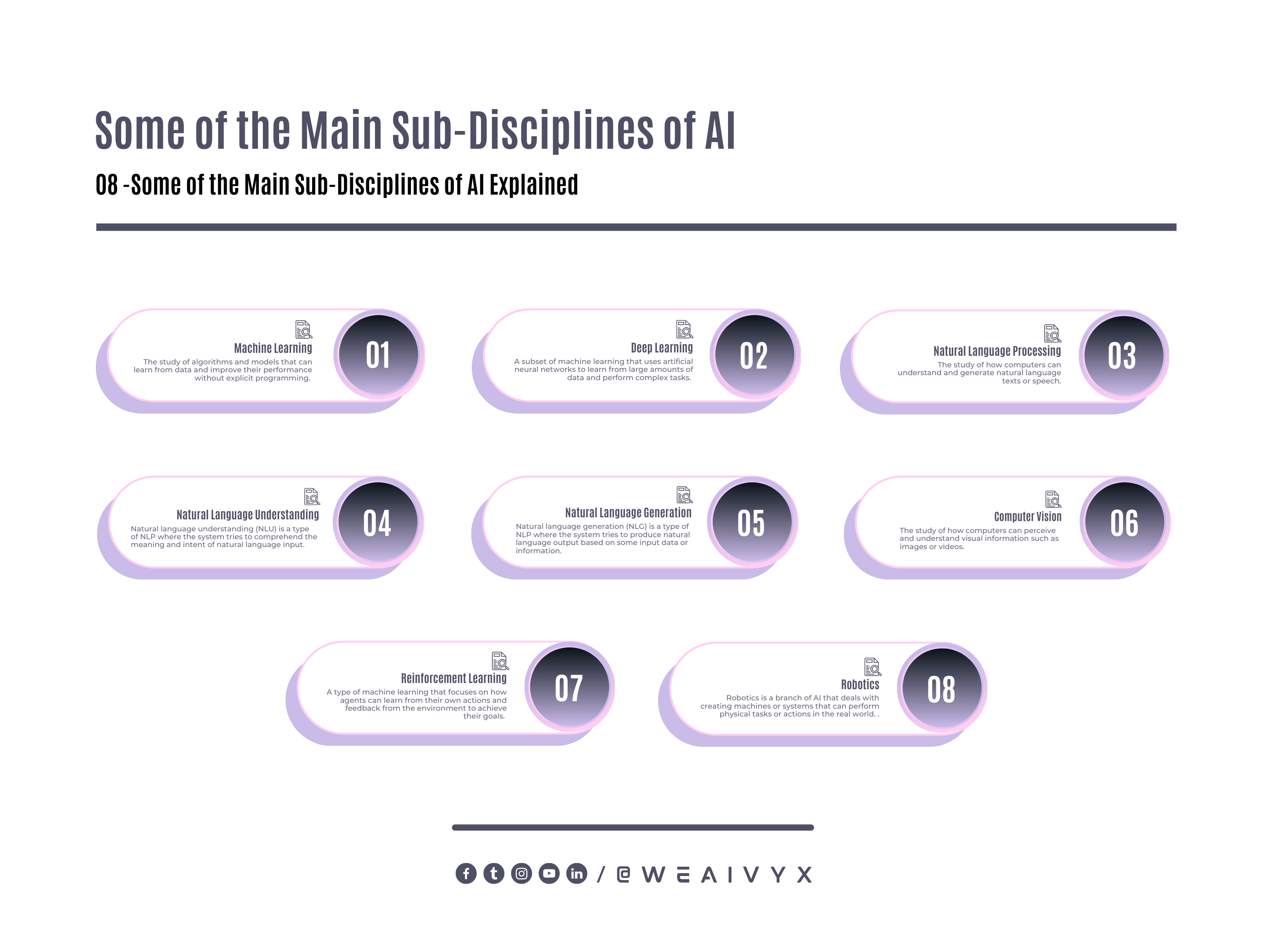
What Are Some Common Terms and Concepts Related to AI?
Here are some common terms and concepts related to AI that you may encounter in your study or work:
Algorithm
A set of rules or instructions that a computer or machine follows to perform a specific task or solve a specific problem.
From the set of algorithms available AI systems can make predictions after analyzing them.
Data
The raw information is used as the input or output of an algorithm or model. Data can be structured (such as tables or spreadsheets) or unstructured (such as texts or images). AI requires data for its proper working.
Data Mining
AI can find the required data through the process of data mining, which is a technique of extracting useful information and patterns from large and complex datasets.
Data mining can improve the working of an AI system by getting more knowledge through using the already existing data, such as identifying trends, anomalies, correlations, or associations.
Data mining can also help in decision-making, forecasting, and optimization.
Data Set
AI systems are first trained on a large set of data that improves their working process and knowledge.
A large group of related data is called a dataset. When required AI can search for the data set that is required and use it to produce output.
Features
A measurable attribute or characteristic of data that is used for analysis or prediction.
For example, the height and weight of a person are features that can be used to predict their health status.
Label
The output or outcome of data is used for supervised learning, which is a type of machine learning where the model learns from labeled data.
For example, the health status of a person is a label that can be predicted from their features, such as age, weight, blood pressure, etc.
Labels are also known as targets or dependent variables.
Model
A representation or abstraction of a system or phenomenon that is learned from data by using an algorithm.
A model can be used to make predictions or decisions based on new data. The accuracy of an AI model depends on the data points of AI.
Training
The process of adjusting the parameters of a model by using an algorithm and data to optimize its performance on a specific task or problem.
Training an AI system is the first step in making AI work properly.
Testing
It is the process of evaluating the performance of a model by using new data that was not used for training.
First AI is provided with testing data and then AI produces output according to the given data and previous training. The result is then used to evaluate its working.
Evaluation
The process of measuring the quality or accuracy of a model by using metrics or criteria.
For example, precision and recall are metrics that can be used to evaluate a model for binary classification.
Hyperparameter
A parameter that controls the behavior or configuration of an algorithm or model but is not learned from data.
For example, the number of layers and neurons in a neural network are hyperparameters that can be tuned by trial and error.
Neural Network
A neural network is a type of machine-learning model that mimics the structure and function of biological neurons.
A neural network consists of layers of nodes or units that can process information and transmit signals.
Each node has a weight or parameter that determines how much it influences the output of the next layer.
A neural network can be trained using various algorithms such as backpropagation or gradient descent to adjust its weights or parameters based on the data and the desired output.
Entity Recognition
Entity recognition is a type of NLP where the system tries to identify and extract entities or concepts from a text or speech. Entities can be of various types such as names, dates, locations, organizations, etc.
Entity recognition can be used for various purposes such as information extraction, knowledge base construction, question answering, etc.
Knowledge Base
A knowledge base is a type of AI system that stores and organizes structured or unstructured information or data logically and consistently.
A knowledge base can be used for various purposes such as reasoning, inference, query answering, etc.
Reasoning
Reasoning is a type of AI where the system tries to draw conclusions or make decisions based on facts, rules, knowledge, or logic.
Reasoning can be divided into two main types: deductive reasoning and inductive reasoning.
Speech Recognition
Speech recognition is a branch of AI that deals with converting speech or spoken language into text or commands.
Speech recognition can be used for various purposes such as voice assistants, dictation, transcription, etc.
Voice Assistant
A voice assistant is a type of AI system that can interact with users through natural language speech.
A voice assistant can perform various tasks or services based on the user’s voice commands or queries.
For example, a voice assistant can answer questions, play music, set reminders, book flights, etc.
Chatbot
A chatbot is a type of AI system that can converse with users through natural language text or speech.
A chatbot can provide various information or services based on the user’s input or context.
For example, a chatbot can provide customer support, product recommendations, weather updates, etc.
Sentiment Analysis
Sentiment analysis is a type of NLP where the system tries to determine the emotional tone or attitude of a text or speech.
Sentiment analysis can be used for various purposes such as market research, social media analysis, customer feedback, etc.
Machine Translation
Machine translation is a type of NLP where the system tries to translate text or speech from one language to another.
Machine translation can be used for various purposes such as communication, education, tourism, etc.
Text Summarization
Text summarization is a type of NLP where the system tries to create a concise and informative summary of a longer text.
Text summarization can be used for various purposes such as news articles, research papers, reviews, etc.
Optical Character Recognition
Optical character recognition (OCR) is a type of computer vision where the system tries to convert text in images or videos into machine-readable format.
For example, an OCR algorithm can extract text from scanned documents, handwritten notes, signs, etc.
Overfitting
Overfitting is a problem that occurs when a machine learning model learns too much from the training data and fails to generalize well to new or unseen data.
This can happen when the model is too complex or has too many parameters compared to the amount of data available.
Overfitting can lead to poor accuracy and reliability of the model.
Underfitting
Underfitting is a problem that occurs when a machine learning model learns too little from the training data and fails to capture its underlying patterns or features.
This can happen when the model is too simple or has too few parameters compared to the complexity of the data.
Underfitting can lead to poor accuracy and reliability of the model.
Optimization
The process of finding the best solution or configuration for a problem by minimizing or maximizing an objective function.
For example, gradient descent is an optimization technique that iteratively updates the parameters of a model by moving in the direction of the steepest descent of the objective function.
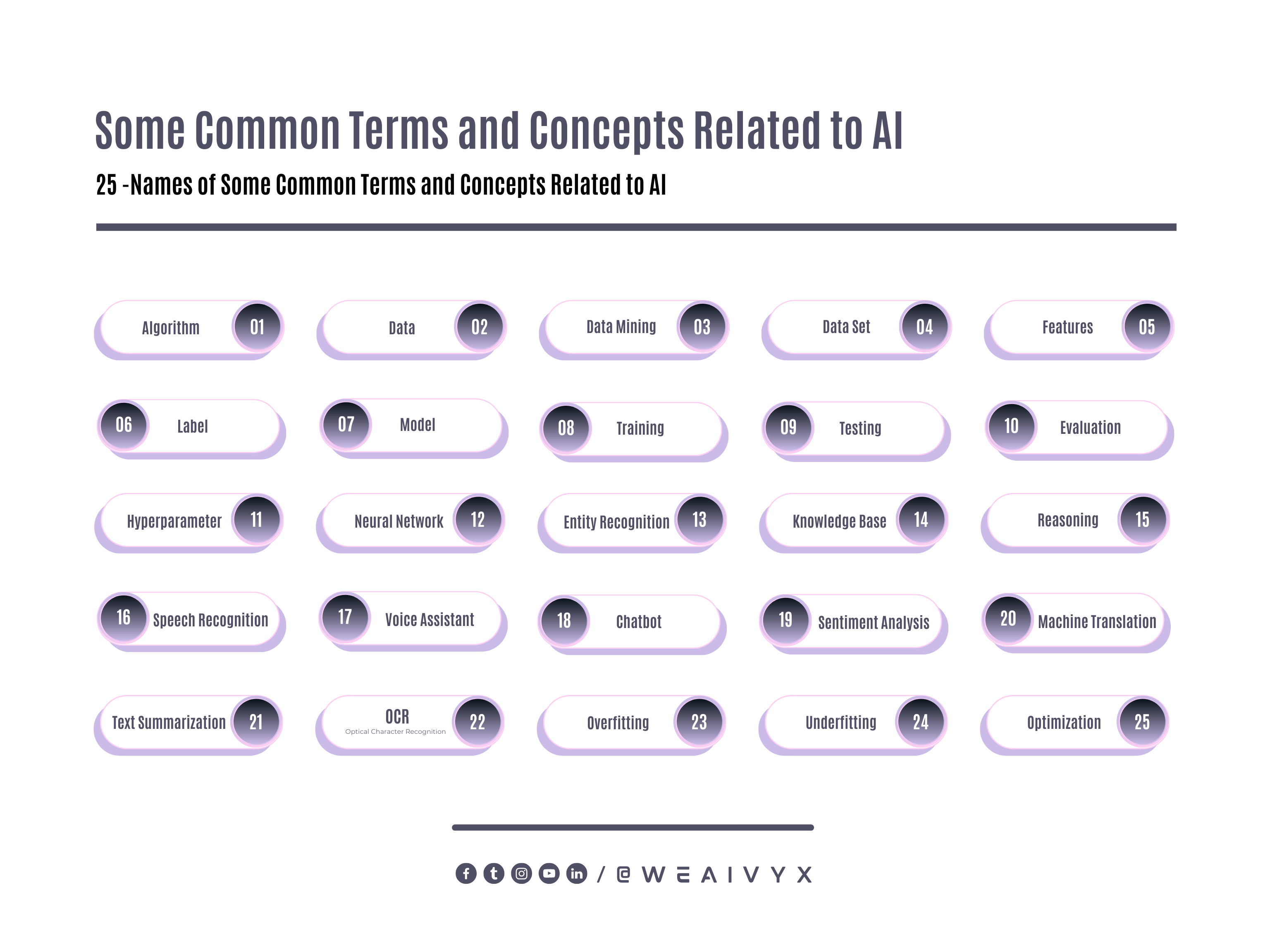
Conclusion
This blog post has provided you with a handy reference for understanding some of the most common and important terms and concepts related to artificial intelligence (AI), its sub-disciplines, and related fields.
I hope you have found this blog post informative and helpful. Thank you for reading this blog post, and I hope you enjoyed it. Please feel free to share your feedback, comments, or questions below.
